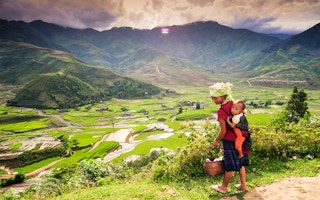With the world population rising, demographers are grappling with one of the most pressing issues of the century - will there be enough food for an extra two to four billion people?
Projections of global population growth vary widely with the United Nations last month forecasting numbers rising to 9.6 billion in 2050 and around 10.9 billion by the end of the century from 7.2 billion currently.
That is about 1.5 billion more people than another estimate calculated by the International Institute for Applied Systems Analysis (IIASA), a Vienna-based research organisation, which predicts a world population peak of 9.4 billion in 2070.
The Food and Agriculture Organisation of the United Nations (FAO) estimates that 60 per cent more food is needed to feed a world population of nine billion people.
“
The most likely outcome of population growth is higher food prices. I don’t think we will run out of food, but continued high prices mean poor people will go hungry
John Bongaarts, director of the Population Council in New York
Experts are divided on exactly how many people the earth can sustain but are in agreement that upper-end projections are a concern with profound implications for food prices, the environment, security and future planning by governments.
“Obviously 2 billion more people would mean greater pressures on food production and on the environment,” said John Wilmoth, director of the United Nations’ Population Division, ahead of a panel discussion on Wednesday on feeding the world at the Food and Agricultural Organisation (FAO) in Rome.
“Historically, we have managed to expand food production more rapidly than population growth.”
Projecting the future population at a time of new agricultural techniques, climate change impacting food production, and efforts underway to cut greenhouse gas emissions is seen by some to be as accurate as crystal ball gazing.
But the challenge is deemed to be three-sided with programmes to boost food output, to contain population growth, and address climate change seen as equally important.
The key difference between IIASA’s forecast and the UN numbers stems from projections of what will happen in Africa, currently the world’s fastest growing region.
Education and resources
The continent’s population could quadruple to four billion by 2100, the United Nations estimates. Others disagree.
Wolfgang Lutz, programme director for world population at the IIASA, disputes this figure.
He said young women across Africa are better educated today than older generations which should lead to a decline in fertility and research shows that educated women tend to have fewer children and later in life.
“The UN models are based on statistical extrapolations based on past trends, without looking at education,” Lutz told the Thomson Reuters Foundation.
Education has been proved to impact birth rates.
Faced with high birthrates and overcrowding in the 1970s, authorities in Bangladesh, one the world’s most densely populated countries, introduced family planning education, including door-to-door advice, and access to contraception.
The birthrate dropped to 2.3 children per woman today from from more than 6 children in 1971.
“This is one place where family planning has made a clear difference,” John Bongaarts, director of the Population Council in New York, told the Thomson Reuters Foundation.
But even in countries where populations are growing fast, experts said hunger could be eliminated if resources were better utilised.
Most of the world’s worst famines have been due to war or political instability, rather than a simple lack of food.
“The world gets into more trouble, the more people we have. That trouble gets reflected in climate changes, shortages of land, water and whatever else,” Bongaarts said.
“The most likely outcome of population growth is higher food prices. I don’t think we will run out of food, but continued high prices mean poor people will go hungry.”










